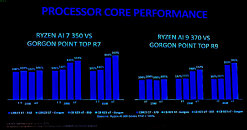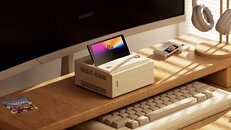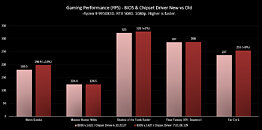
PowerColor Red Devil RX 9070 XT Limited Spectral White Edition Reportedly Arriving on April 8
Late last week, a leak suggested a forthcoming Spectral White Limited Edition refresh of the existing Red Devil Radeon RX 9070 XT graphics card design. PowerColor's pale reinterpretation of flagship level hardware appeared online courtesy of an accidental Amazon listing; indicating $899/€929 pricing. The Taiwanese manufacturer's Spectral White product line—historically favoring Hellhound SKUs—is viewed favorably as offering a nearly "all-white" aesthetic; extending to proper coloration of PCB and I/O panel designs.
As expected, PowerColor has distributed Limited Edition packages to media and influencer outlets—as evidenced by Overclock3D's very recent showcasing of a sample unit. In response to last week's leak, OC3D's "Tiny" Tom Logan "previewed" the ghostly Red Devil RX 9070 XT variant—he noted that a "performance/review" NDA is still in effect; due to be lifted on April 2. Video coverage explored a slight "bending of the rules," but Logan did not power up his evaluation specimen. As evidenced by the unboxing process, PowerColor has bundled in several Spectral White-tinted accessories—indicating a commendable level of attention to detail. By contrast, the manufacturer's slightly inelegant and contradictory nomenclature is confirmed by outer box labelling—loudly exclaiming: "RED DEVIL Spectral White." Amusingly, Logan and his team have nicknamed this new sub-variant: "White Devil."
As expected, PowerColor has distributed Limited Edition packages to media and influencer outlets—as evidenced by Overclock3D's very recent showcasing of a sample unit. In response to last week's leak, OC3D's "Tiny" Tom Logan "previewed" the ghostly Red Devil RX 9070 XT variant—he noted that a "performance/review" NDA is still in effect; due to be lifted on April 2. Video coverage explored a slight "bending of the rules," but Logan did not power up his evaluation specimen. As evidenced by the unboxing process, PowerColor has bundled in several Spectral White-tinted accessories—indicating a commendable level of attention to detail. By contrast, the manufacturer's slightly inelegant and contradictory nomenclature is confirmed by outer box labelling—loudly exclaiming: "RED DEVIL Spectral White." Amusingly, Logan and his team have nicknamed this new sub-variant: "White Devil."













































































